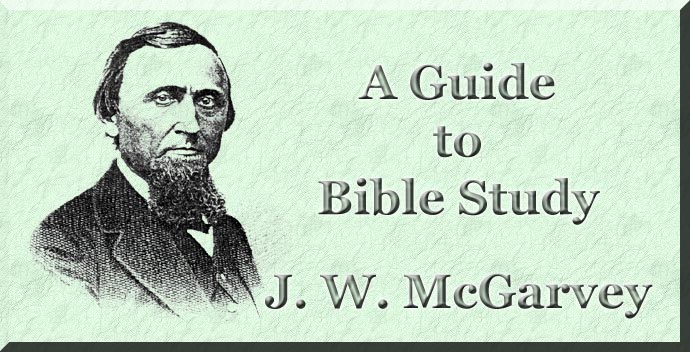THE ORIGINAL TEXT AND ITS PRESERVATION.
The books of the Old Testament were all
written, with unimportant exceptions to be mentioned hereafter, in the
Hebrew tongue, which was the native tongue of the Hebrew nation. As the
earliest of them were written more than three thousand years ago, and the
latest more than two thousand years ago, it is proper to inquire, what
assurance we have that our present books are the same as those in the
original collection, and that they contain the same words. To give a full
answer to these questions would require a whole volume as large as this, but
can give the principal facts in a few lines.
During the period from the first writing of
the books till the invention of printing, all copies were made with the pen,
and it has been found impracticable to copy books in this way without making
some mistakes. These occur chiefly in the spelling of words, and in the
omission or insertion of words not essential to the meaning of a sentence;
but a few occurred which affect the sense, and which sometimes introduce
contradictions of a book [22]
with itself, or with another book. Especially is this last the case with names
and numbers, in which the copyist had no train of thought to guide him. This
accounts for the discrepancies in numbers which every thoughtful reader has
noticed between certain passages in Chronicles and the corresponding
passages in the books of Samuel and Kings.
After this process had continued until the
error of copyists attracted the serious attention of Jewish scholars, a
company of them drew up some very stringent rules to prevent such errors in
the future. They counted the number of words in every book by sections, and
marked the middle word of every section. Then they required every copyist,
when he had copied the middle word, to count back and see if he had the
right number of words. If he had, there was good assurance that he had
omitted none and added none. If he had not, the part written was to be
thrown away and a new copy made. These rules were adopted in the second
century after Christ, and from that time forward no errors worth considering
crept into the Hebrew Scriptures. When printing was invented, which was in
the year 1448, and the Hebrew Old Testament was published in this form,
which was in 1477, [23]
no more copies were written by hand, and the making of mistakes by copying came
to an end; for when the types for a book are once set up correctly, all
copies printed from them are precisely alike.
The question whether any of the original
books have been lost, or others added, is settled by the fact that a Greek
translation of the Old Testament was made, beginning in the year 280 before
Christ, which has come down to our day, and it contains the same books.
There can be no reasonable doubt, therefore, that we now have the Old
Testament substantially the same as when its several books were originally
written.
|

 Home
Home What's New
What's New Bible
Bible Photos
Photos Hiking
Hiking E-Books
E-Books Genealogy
Genealogy Profile
Free Plug-ins You May Need
Profile
Free Plug-ins You May Need
 Get
Java
Get
Java.png) Get Flash
Get Flash Get
7-Zip
Get
7-Zip Get Acrobat Reader
Get Acrobat Reader Get
TheWORD
Get
TheWORD
